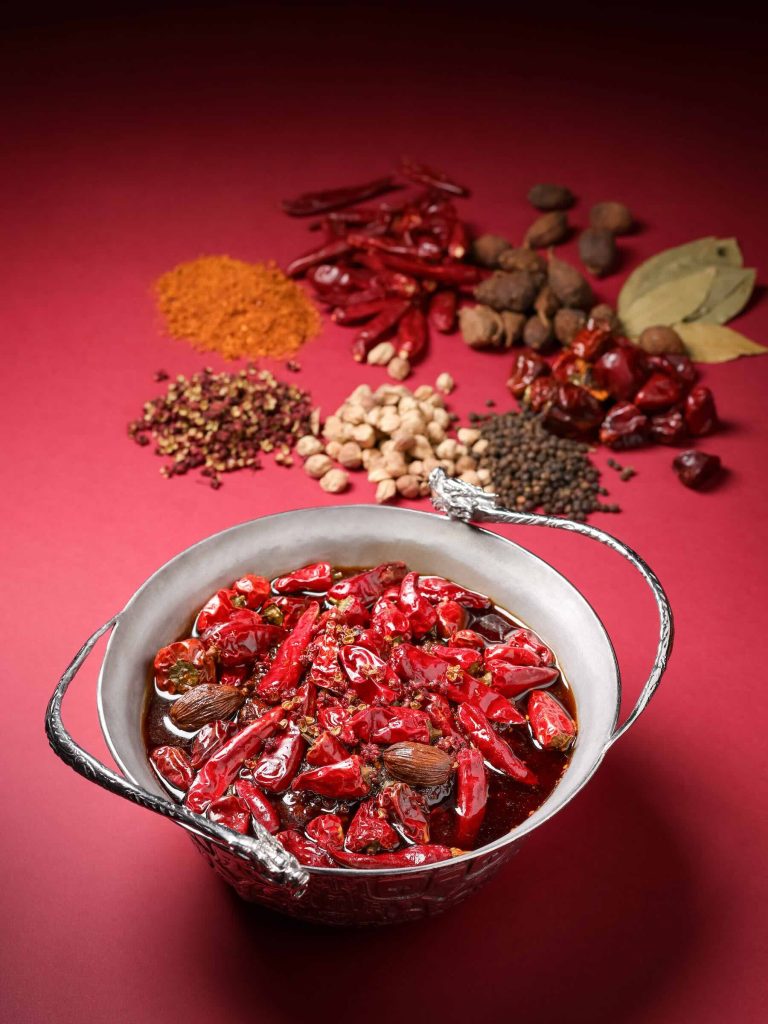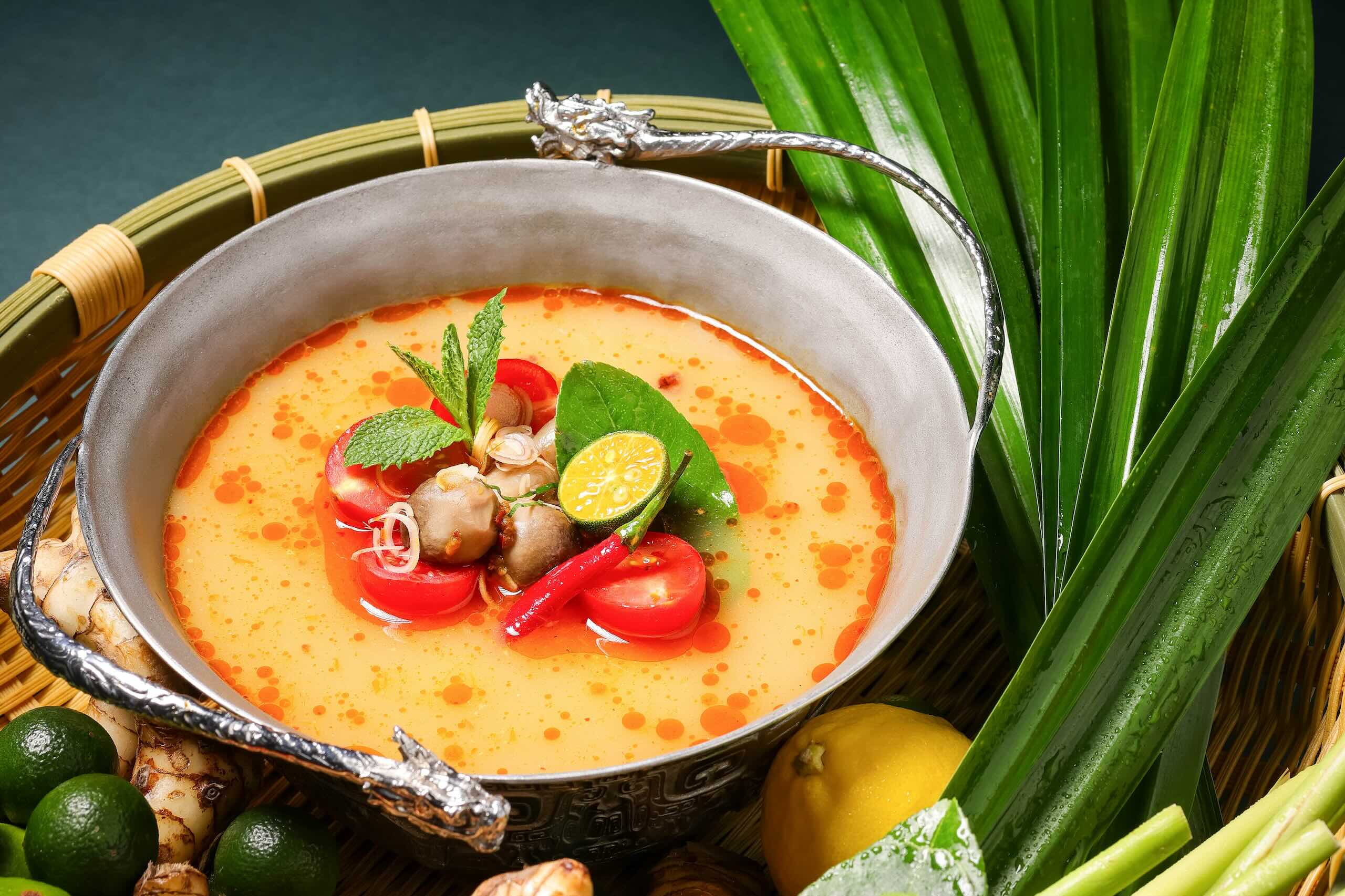Can the communal, rustic art of hot pot be elevated to the fine-dining stratosphere? André Chiang has set out to answer this question, as well as push the boundaries of broth-making.
Chiang is no stranger to surprising gastronomes with new concepts; his modus operandi is to take the seemingly simple and elevate it into an art form. Many who keenly follow the comings and goings of the Asian culinary world will no doubt be familiar with his work; he led the now-shuttered Restaurant André to two Michelin stars, secured another two Michelin stars for his groundbreaking concept Raw, and launched Sichuan Moon to great acclaim. It’s for good reason that the prolific chef has been honoured with the Asia’s 50 Best Restaurants 2018 Lifetime Achievement Award after more than three decades in the industry.

Chiang’s latest project, Broth, takes over Wynn Macau’s Japanese restaurant Mizumi with the intention of staging a long-term pop-up to celebrate the intricacies and complexities of a reinvented form of hot pot cuisine. From Chinese double-boiled broths and French meat bouillons to Japanese nabe dashi, his elevated take on this much-loved food tradition promises to impart a renewed appreciation for the heart and soul of the hot pot experience. (Broth is also arriving on the scene at just the right time in response to today’s modern dining culture, where wellness, health, and eating clean is prioritised, without compromising on flavour.)
His impetus for exploring the heights that hot pot cuisine can be raised to took root after he returned to Asia to further his culinary pursuits. “When I came back from France after 17 years in Europe, I wanted to really promote Asian culture by using a different approach—it’s something I have been doing in Restaurant André, Raw, and Sichuan Moon.”
Chiang’s method examines the Asian gastronomic lexicon to identify what already exists and is appreciated among diverse communities and reimagines its culinary language to “let more people out there know about […] our culture” and introduce them to “a different [food] alphabet so we [can] all understand and appreciate it.” He continues, “If you ask any Asian [person] about [broth], whether it’s a double-boiled soup or a hot pot or a Japanese nabe or even down to Swiss fondue, whatever you want to call it, we have that in our culture, but we never think about how to take it to another level, and that’s something that I have been thinking about.”
Beginning with a tasting experience, diners are encouraged to sample the various broths through a “soup tasting” before choosing a preferred flavour for their individual pot, putting the broth as the focus of the dining experience. (New marble tables, fitted with individual hot pot burner plates made specifically for the Broth pop-up, have been installed for the occasion.)

Eight different soup options are available, each an original interpretation of an Asian broth tradition as seen through Chiang’s unique culinary lens. Sauerkraut, a novel take on a sour cabbage broth infused with Gaoliang sorghum spirit, highlights lacto-fermented cabbage in a rich pork-bone soup. By his own admission, it’s also one of the more difficult flavours on the menu to get right, as the natural fermentation process relies on the environment. Chiang’s time-intensive Sichuan broth, inspired by a family recipe, features green peppers and pickled chilli, built on a base of kombu and black-bone chicken. Hokkaido adds umami miso to a Japanese soy-milk broth for a complex soup that pairs well with seafood toppings; Laksa blends a Southeast-Asian-esque curry broth with aromatic herbs and spices; and Mala brings numbing heat atop bone marrow and 18 spice varieties, to name but a few. “We would like to take the soup as the sauce. Basically, you don’t need a sauce—you just dip the food into the broth because it’s so flavourful. You don’t need extra dip,” the chef says.

For hot pot, “most people won’t taste the soup before you put in any ingredient—you will taste the soup after,” says Chiang. He hopes to change diners’ perspectives about broth-making and debunk the common misconception that the pot itself is an afterthought. It’s not just about the ingredients that you dip in the soup, however premium. At Broth, leading with a soup tasting is about “creating that familiarity first with the most important part of what the dining experience is about, promoting familiarity with the broth, which is the heart of the experience. It’s for guests to first encounter with different flavour combination as the craft of a chef.”
Guests start the meal—available as a multi-course set or through à la carte selections—with a presentation of homemade Japanese pickles and appetisers, such as braised Kyoto aubergines and maitake with tofu paste, followed by a shared seafood tower accompanied by a seasonal vegetable platter. Live seafood choices depend on the availability of fresh catches, but giant grouper, Australian lobster, Dalian abalone, king crab, local mud crab, and razor clams are on the menu.

Bringing an element of performance to the experience, the succeeding meat course is prepared table-side in shabu-shabu style by Broth’s skilled chefs in a personalised showcase. Different proteins are matched with a respective meat bouillon to extract the best flavours. A “starch station” is then wheeled to each table as the third expression of the meal. Guests can choose to have Aomori rice, udon, or ramen noodles cooked in an aromatic dashi broth as their carb course—the conclusion is a moreish palate cleanser to ready your taste buds for dessert.
“I think a flavour is just like colour. Everyone has a different approach, [but] we appreciate a good colour combination. Our mission is to compose it nicely and to let people appreciate all kinds of different colours, all kinds of different flavours. […] I think that’s our job—to open the doors and open the windows. […] I’ll be constantly discovering something [new] with the Asian alphabet and how to compose it in a different way, with a different type of cuisine, a different type of food concept that has already been there.” Chiang continues, “I think, most of the time, we take for granted the dining culture, the things that we think we already know. But today, you see how Asian diners have been appreciating French cuisine and European cuisine so much, even down to their deep histories. You hardly see it the other way around. But why not? We take it for granted, right? I try to close that gap as much as I can so the world can have a better look at or a better presentation of what a nation’s cuisine of flavour can be.”
As we sip the marvellous broths and develop a newfound appreciation for what we’ve come to understand as a homely comfort food, we keenly await Chiang’s next exciting reinterpretation.
Broth by André Chiang at Mizumi
G/F, Wynn Macau, Rua Cidade de Sintra, NAPE, Macau
Tel: (+853) 8986 3663
All images courtesy of Broth and Wynn Macau.









